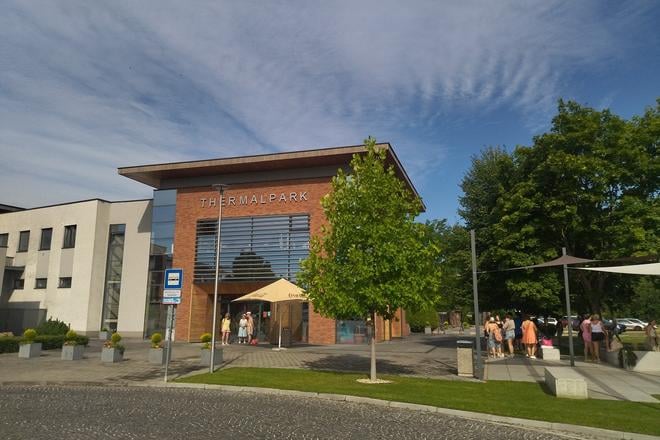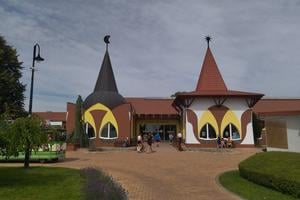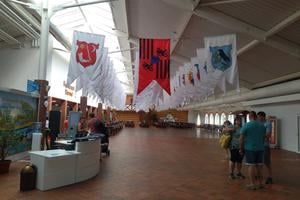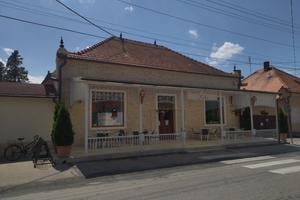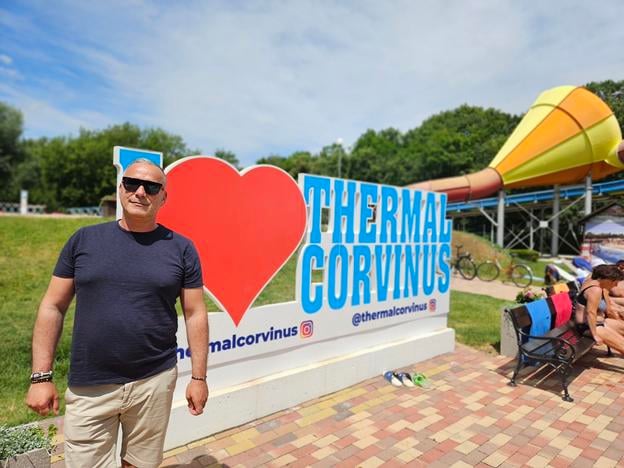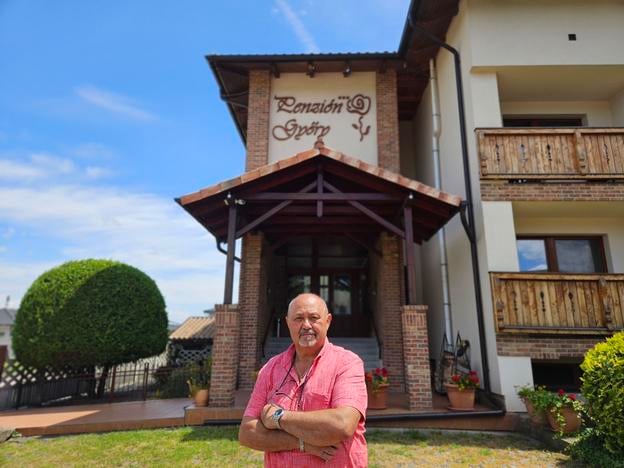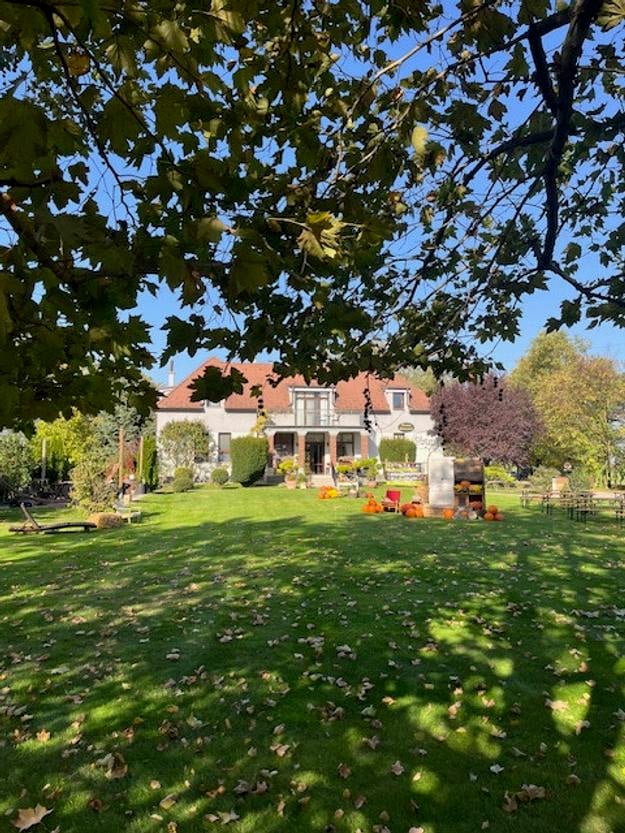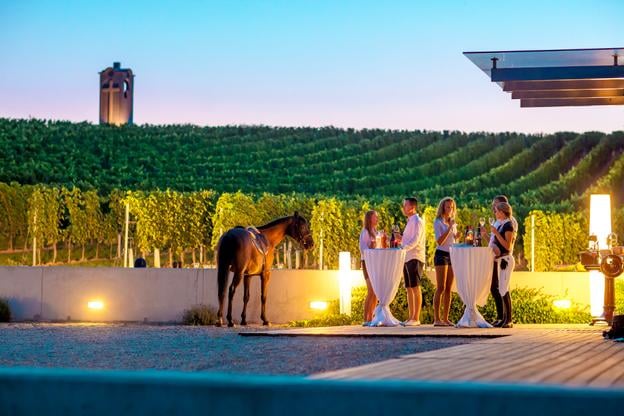You can read this exclusive content thanks to the FALATH & PARTNERS law firm, which assists American people with Slovak roots in obtaining Slovak citizenship and reconnecting them with the land of their ancestors.
Žitný ostrov, or Rye Island, takes its name from the grain that flourishes in its rich soil. Set in one of Slovakia’s most fertile regions, the island is home predominantly to a Hungarian-speaking community. Bordered by the Danube and Little Danube rivers, it is a land shaped by water, with springs and underground sources scattered throughout. In recent years, local entrepreneurs have begun tapping into the island’s geothermal resources to develop a tourism industry centred on hot springs and wellness.
Discover this part of southern Slovakia with the help of our Trnava Region guide.
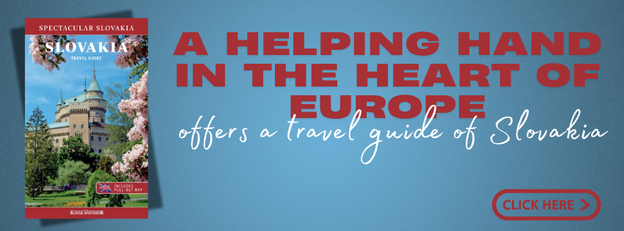
By late June, wheat fields across the island had begun to ripen, signalling the approach of harvest. The heat hung heavily in the air, making the region’s thermal baths an inviting prospect.
The Thermalpark in Dunajská Streda begins to stir even before its nine o’clock opening. Children and pensioners gather at the gates, some already clutching towels, while a coach arrives with another group of school-age visitors, seemingly on an early summer outing.
Just beside the entrance, hotel guests sip coffee on the terrace. The hotel draws an older crowd, many of whom return each year to take advantage of the healing waters. The complex features four indoor and six outdoor pools, all fed by the region’s thermal springs. A massage centre and a sauna area offer additional ways to unwind.
In operation since the early 1970s, the thermal pool has undergone significant modernisation. New accommodation has been added, refreshment stands have been redesigned with a more polished appearance, and a spacious campsite next door continues to attract a loyal following.
With the Trnava Region travel guide in hand, “Little Rome” reveals itself to be larger than life, ready to welcome visitors with open arms – and a glass of mead.
Gabriel Somogyi, director of Thermalpark, leads a short walk through the pool complex, ending at a sleek hotel tucked to one side. The building stands out with its striking architecture, green-clad facade and broad terrace equipped with a large outdoor grill. Such upscale accommodation is not what one might expect beside a swimming complex.
“Interest in higher-quality accommodations is growing, which is why we invested in this hotel with 89 rooms,” Somogyi tells The Slovak Spectator.
A natural lake lies nearby, flanked by a neatly kept beach dotted with umbrellas. The pool area itself is tidy and inviting. Children race up the stairs to the water slide, while families settle in along the edges of the main pools. A lively promenade lines one side, where stalls serve food and drinks to a steady stream of visitors.
“We have also enhanced the gastronomic scene. Here, you can find not only traditional lángos but also kebabs and baklava, making the variety more appealing with up to 35 different stalls,” Somogyi adds.
Thermalpark’s rising caravan visitors
Travellers looking to save on accommodation often opt for the campsite next to the Thermalpark, which can host up to 250 caravans. The number of caravanners has grown steadily in recent years, according to Gabriel Somogyi.
Cemeteries in Dunajská Streda district
For many foreigners tracing their Slovak heritage, finding the burial sites of their ancestors is a deeply personal journey. To aid in this quest, we have provided maps of the districts we visited, with every cemetery carefully marked. Here you can find cemeteries in the Dunajská Streda district.
“The number of caravanners has been constantly increasing in recent years; the coronavirus pandemic sparked interest in this form of travel. Many tried it and enjoyed the experience,” he says. Most of them come from the Czech Republic, followed by visitors from Germany, many of whom stay for several weeks. Slovaks, on the other hand, make up around 85 percent of day guests.
In May, the campsite was more than half full of Polish holidaymakers. Their public holidays often coincide with that period, and many use the opportunity to stop in Dunajská Streda en route to Croatia. “Some stayed longer and chose not to go to the sea,” Somogyi adds with a smile. Swimming is not the only attraction: visitors can rent paddleboards or take part in various sports activities on site.
Hungarian guests are relatively rare, accounting for less than 1 percent of overall attendance. “This is mainly because they have plenty of thermal baths at home, and it is closer from Hungary to Veľký Meder than us from the border,” Somogyi explains.

Despite this, Thermalpark draws nearly 490,000 visitors a year from more than 30 countries. Somogyi believes the number could be higher with a more efficient support system.
“There could be even more visitors if we took inspiration from Hungary. For instance, their recreational vouchers are more effective than what we have here. Employers provide funds to employees on recreational cards, which can be directly used for payments at thermal baths or restaurants. This process is less bureaucratic compared to Slovakia, where we also have recreational vouchers, but they are in paper form,” he says.
Hungary, he adds, has also benefited from years of consistent promotion abroad. “It takes consistent and systematic marketing to persuade people that vacationing in Hungary is worthwhile,” Somogyi notes.
Veľký Meder’s thermal charm
Roughly 24 kilometres from Dunajská Streda lies Veľký Meder, where the road leading to the local aquapark is lined with signs advertising private guesthouses and refreshment stalls. A tourist train stands in front of the entrance.
The gateway to the recreation complex features an unusual design. Two towers display large models of the sun and crescent moon. While these celestial motifs may appear to evoke Islamic design, they are intended to represent day and night.
Inside the entrance hall, where national flags hang from the ceiling in the style of a medieval knight’s hall, Roland Šušík, manager of the Thermal Corvinus swimming pool, offers a brief history.
The concept of today’s thermal complex was developed by the city 20 years ago to set it apart from other pools on Žitný ostrov.
The name “Corvinus” refers to the Hungarian king Matthias Corvinus. His family coat of arms, showing a raven with a ring in its beak, appears throughout the swimming area.
The swimming pool complex covers a large area and includes up to 13 pools, a water slide, and a promenade lined with food stalls. Operating for more than 50 years, it has drawn many Czech tourists since its opening in the early 1970s, many of whom remain loyal visitors.
Roland Šušík explains that over half of the guests are Czech, about 40 percent are Slovak, and the remainder come from various parts of Europe. Last year, Veľký Meder welcomed 560,000 swimmers, while a record 713,000 visitors arrived in 2019.
A helping hand in the heart of Europe: a travel guide to Slovakia.
The swimming pool area is mostly frequented by pensioners who favour the very hot water. During holidays, however, the atmosphere changes as families with children arrive, filling the space with energy and activity.
“Hungarians come here to shop and swim, but they don’t represent a large portion of our visitors,” says Šušík. He believes it is more advantageous to attract Polish and Czech tourists, while Austrian visitors are seen less often.
Hungarians outmarket Slovak resorts
Unlike Dunajská Streda, Veľký Meder lacks large hotels around its swimming pool, relying instead on smaller family-run guesthouses that can accommodate roughly 4,000 visitors. The challenge, however, is not the number of guests but the length of their stays. “In the past, visitors would stay for a week, but now five days is often enough,” says Šušík.
He points out that Hungarian destinations excel in marketing, services and overall government support for tourism. “This is why they have managed to attract some of our Czech clientele in recent years,” he adds.
Karol Győry, owner of a family guesthouse near the swimming pool, agrees that Hungarians are more skilled at promoting their attractions, including thermal pools. Ninety percent of his guests are Czech, visiting local pools twice a year to warm up, with some choosing to travel on to Hungary.
“They visit places such as Sárvár or Hévíz, where more luxurious hotels with wellness facilities are available. These areas are lively in the evenings after swimming, with wine, quality gastronomy and music,” Győry notes.
Both towns lie within a two-hour drive from Veľký Meder. The guesthouse owner explains that Hungarians have been active in tourism exhibitions in Prague for the last 15 years, investing hundreds of thousands of euros each year to advertise their thermal resorts.
“When investment is made in advertising and quality services, the results eventually show in visitor numbers,” he says. With four decades in the tourism business, Győry adds that the Hungarian government provides greater support to tourism entrepreneurs, reinvesting accommodation tax revenues into the industry - a practice less common in Slovakia.
Veľký Meder currently offers little in the way of nightlife once the pools close, a fact Šušík readily admits. To improve the evening experience, plans are underway to create a promenade stretching from the access road to the swimming pools, where visitors can enjoy live music and other cultural events after dark.
In addition, Šušík hopes to attract camping enthusiasts. The city has recently acquired a 1.2-hectare plot of land near the swimming complex, with intentions to develop a campsite featuring 42 pitches.
Guesthouse under plane trees
The Platan Guesthouse, nestled in the village of Ňárad near the Hungarian border, attracts visitors seeking water activities on a more intimate scale. Alongside wellness services, the guesthouse boasts a private pond where guests can enjoy fishing.
Owners Mr and Mrs Miklós established the guesthouse 20 years ago. “Our family travelled extensively and often stayed in family-run guesthouses, so we wanted to create something similar,” recalls co-owner Judit Miklósová. The guesthouse takes its name from the park that surrounds it, shaded by old plane trees.
Situated on an international cycling route close to the Danube, the majority of visitors come from abroad. “We have hosted guests from Venezuela, Hawaii, and New Zealand. In recent years, tourists from other parts of Slovakia have started to arrive, which is very encouraging,” adds Miklósová. She credits this increase to the recreational voucher system. Interestingly, there are generally fewer guests from Hungary.
Miklósová describes Žitný ostrov as a region with an excellent location, offering easy access to both Austria and Hungary. She promotes local farmers’ markets and the natural beauty along the Danube as key attractions.
At the same time, she sees room for improvement. She hopes to see the creation of open village houses - old homes where older generations still live, complete with traditional yards, farm animals, and gardens.
“Tourists could visit these homes for a good lunch and purchase homemade products. This would support local residents while providing an authentic attraction for visitors,” she explains. Miklósová believes there is considerable potential in gastrotourism and agritourism to attract more visitors to the region.
Spectacular Slovakia travel guide
A helping hand in the heart of Europe thanks to our Slovakia travel guide with more than 1,000 photos and hundred of tourist spots.
Our detailed travel guide to the Tatras introduces you to the whole region around the Tatra mountains, including attractions on the Polish side.
Lost in Bratislava? Impossible with our City Guide!
See some selected travel articles, podcasts, and traveller info as well as other guides dedicated to Nitra, Trenčín Region, Trnava Region and Žilina Region.


